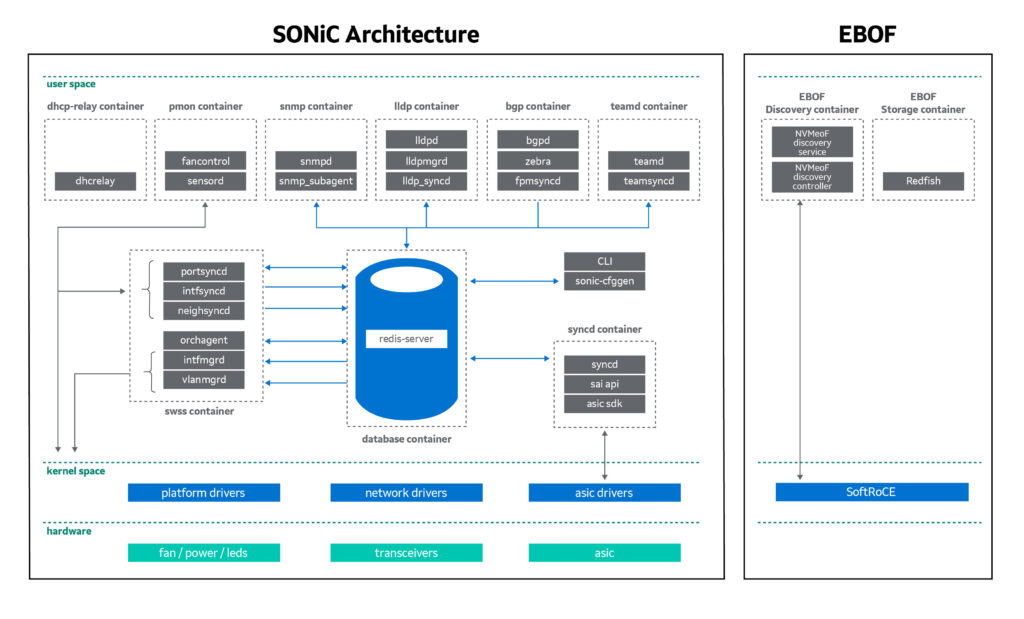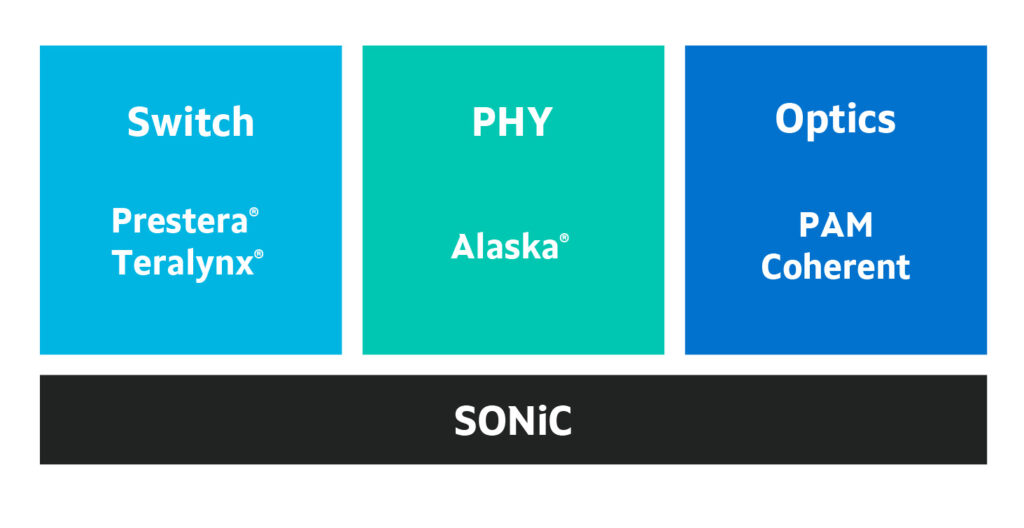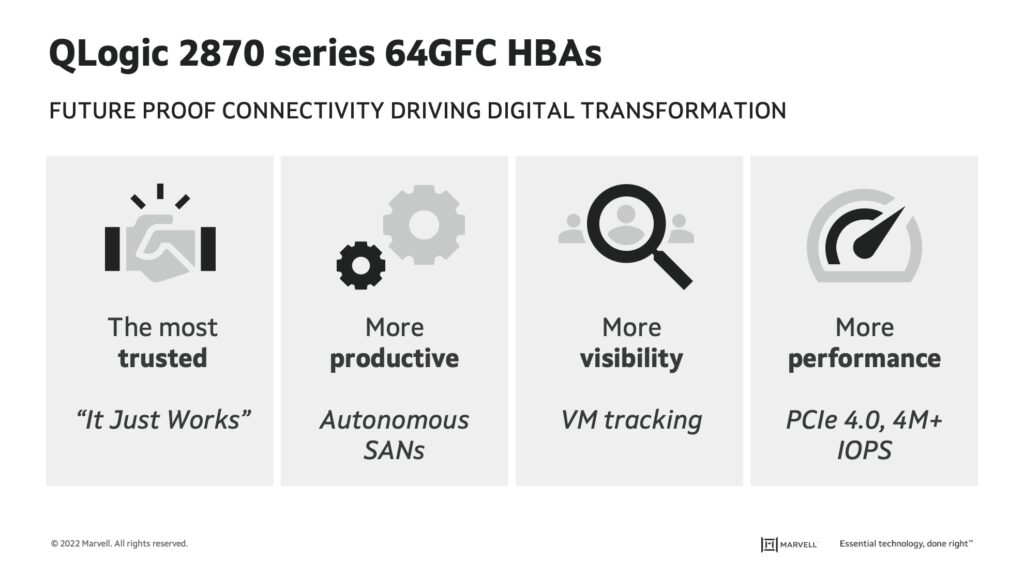Archive for the 'Cloud' Category
-
March 23, 2023
5Gネットワークの安全性は?
By Bill Hagerstrand, Security Solutions BU, Marvell
New Challenges and Solutions in an Open, Disaggregated Cloud-Native World
Time to grab a cup of coffee, as I describe how the transition towards open, disaggregated, and virtualized networks – also known as cloud-native 5G – has created new challenges in an already-heightened 4G-5G security environment.
5G networks move, process and store an ever-increasing amount of sensitive data as a result of faster connection speeds, mission-critical nature of new enterprise, industrial and edge computing/AI applications, and the proliferation of 5G-connected IoT devices and data centers. At the same time, evolving architectures are creating new security threat vectors. The opening of the 5G network edge is driven by O-RAN standards, which disaggregates the radio units (RU), front-haul, mid-haul, and distributed units (DU). Virtualization of the 5G network further disaggregates hardware and software and introduces commodity servers with open-source software running in virtual machines (VM’s) or containers from the DU to the core network.
As a result, these factors have necessitated improvements in 5G security standards that include additional protocols and new security features. But these measures alone, are not enough to secure the 5G network in the cloud-native and quantum computing era. This blog details the growing need for cloud-optimized HSMs (Hardware Security Modules) and their many critical 5G use cases from the device to the core network.
-
January 04, 2023
ソフトウェアで定義された自動車のためのソフトウェアで定義されたネットワーキング
マーベル、オートモーティブビジネスユニット、マーケティング担当バイスプレジデント、アミール・バー・ニヴ、ソナタス、および最高マーケティング責任者、ジョン・ハインライン、マーベル、オートモーティブビジネスユニット、SW担当副社長、サイモン・エーデルハウス著
ソフトウェアデファインド車両(SDV)は、自動車業界における最新かつ最も興味深いメガトレンドのひとつである。 以前のブログ で述べたように、この新しいアーキテクチャーとビジネス・モデルが成功する理由は、すべての利害関係者にメリットをもたらすからである:
- OEM(自動車メーカー)は、アフターマーケットサービスや新たなアプリケーションから新たな収入源を得るだろう。
- 車の所有者は、車の機能や特徴を簡単にアップグレードできる。
- モバイル通信事業者は、新しいアプリケーションによる車両データ消費の増加から利益を得るだろう。
ソフトウェアデファインド車両とは何か? 正式な定義はないが、この用語は、柔軟性と拡張性を可能にするため、車両設計におけるソフトウェアの使用方法の変化を反映している。 ソフトウェアデファインド車両をよりよく理解するためには、まず現在のアプローチを検証する必要がある。
今日の自動車機能を管理する組込み制御ユニット(ECU)にはソフトウェアが含まれているが、各ECUのソフトウェアは他のモジュールと互換性がなく、孤立していることが多い。 更新が必要な場合、車両の所有者はディーラーのサービスセンターに出向かなければならず、所有者は不便を強いられ、メーカーにとってはコストがかかる。
-
November 28, 2022
驚異のハック - SONiCユーザーの心をつかむ
By Kishore Atreya, Director of Product Management, Marvell
Recently the Linux Foundation hosted its annual ONE Summit for open networking, edge projects and solutions. For the first time, this year’s event included a “mini-summit” for SONiC, an open source networking operating system targeted for data center applications that’s been widely adopted by cloud customers. A variety of industry members gave presentations, including Marvell’s very own Vijay Vyas Mohan, who presented on the topic of Extensible Platform Serdes Libraries. In addition, the SONiC mini-summit included a hackathon to motivate users and developers to innovate new ways to solve customer problems.
So, what could we hack?
At Marvell, we believe that SONiC has utility not only for the data center, but to enable solutions that span from edge to cloud. Because it’s a data center NOS, SONiC is not optimized for edge use cases. It requires an expensive bill of materials to run, including a powerful CPU, a minimum of 8 to 16GB DDR, and an SSD. In the data center environment, these HW resources contribute less to the BOM cost than do the optics and switch ASIC. However, for edge use cases with 1G to 10G interfaces, the cost of the processor complex, primarily driven by the NOS, can be a much more significant contributor to overall system cost. For edge disaggregation with SONiC to be viable, the hardware cost needs to be comparable to that of a typical OEM-based solution. Today, that’s not possible.
-
October 26, 2022
64Gファイバー・チャネルのテイスティング・ノート
By Nishant Lodha, Director of Product Marketing – Emerging Technologies, Marvell
While age is just a number and so is new speed for Fibre Channel (FC), the number itself is often irrelevant and it’s the maturity that matters – kind of like a bottle of wine! Today as we make a toast to the data center and pop open (announce) the Marvell® QLogic® 2870 Series 64G Fibre Channel HBAs, take a glass and sip into its maturity to find notes of trust and reliability alongside of operational simplicity, in-depth visibility, and consistent performance.
Big words on the label? I will let you be the sommelier as you work through your glass and my writings.
-
October 12, 2022
クラウドストレージとメモリーの進化
By Gary Kotzur, CTO, Storage Products Group, Marvell and Jon Haswell, SVP, Firmware, Marvel
The nature of storage is changing much more rapidly than it ever has historically. This evolution is being driven by expanding amounts of enterprise data and the inexorable need for greater flexibility and scale to meet ever-higher performance demands.
If you look back 10 or 20 years, there used to be a one-size-fits-all approach to storage. Today, however, there is the public cloud, the private cloud, and the hybrid cloud, which is a combination of both. All these clouds have different storage and infrastructure requirements. What’s more, the data center infrastructure of every hyperscaler and cloud provider is architecturally different and is moving towards a more composable architecture. All of this is driving the need for highly customized cloud storage solutions as well as demanding the need for a comparable solution in the memory domain.
-
October 05, 2022
エネルギー効率の高いチップの設計
マーベル、ESGグローバルヘッド、レベッカオニールによる
今日はエネルギー効率の日である。 エネルギー、特に当社のチップに電力を供給するために必要な電力消費は、マーベルが最も重視していることである。 私たちの目標は、世代を重ねるごとに製品の消費電力を削減し、設定された機能を実現することである。
当社の製品は、クラウドや企業のデータセンター、5Gキャリアインフラ、自動車、産業用および企業用ネットワーキングにまたがるデータインフラに電力を供給する上で不可欠な役割を果たしている。 製品を設計する際には、新しい機能を提供する革新的な機能に焦点を当てると同時に、性能、容量、セキュリティを向上させ、最終的には製品使用時のエネルギー効率を改善する。
これらの技術革新は、世界のデータインフラをより効率的にし、ひいては気候変動への影響を軽減するのに役立つ。 お客様による当社製品の使用は、マーベルのスコープ3の温室効果ガス排出量に寄与している。
-
September 26, 2022
SONiC: It’s Not Just for Switches Anymore
By Amit Sanyal, Senior Director, Product Marketing, Marvell
SONiC (Software for Open Networking in the Cloud) has steadily gained momentum as a cloud-scale network operating system (NOS) by offering a community-driven approach to NOS innovation. In fact, 650 Group predicts that revenue for SONiC hardware, controllers and OSs will grow from around US$2 billion today to around US$4.5 billion by 2025.
Those using it know that the SONiC open-source framework shortens software development cycles; and SONiC’s Switch Abstraction Interface (SAI) provides ease of porting and a homogeneous edge-to-cloud experience for data center operators. It also speeds time-to-market for OEMs bringing new systems to the market.
The bottom line: more choice is good when it comes to building disaggregated networking hardware optimized for the cloud. Over recent years, SONiC-using cloud customers have benefited from consistent user experience, unified automation, and software portability across switch platforms, at scale.
As the utility of SONiC has become evident, other applications are lining up to benefit from this open-source ecosystem.
A SONiC Buffet: Extending SONiC to Storage
SONiC capabilities in Marvell’s cloud-optimized switch silicon include high availability (HA) features, RDMA over converged ethernet (RoCE), low latency, and advanced telemetry. All these features are required to run robust storage networks.
Here’s one use case: EBOF. The capabilities above form the foundation of Marvell’s Ethernet-Bunch-of-Flash (EBOF) storage architecture. The new EBOF architecture addresses the non-storage bottlenecks that constrain the performance of the traditional Just-a-Bunch-of-Flash (JBOF) architecture it replaces-by disaggregating storage from compute.
EBOF architecture replaces the bottleneck components found in JBOF - CPUs, DRAM and SmartNICs - with an Ethernet switch, and it’s here that SONiC is added to the plate. Marvell has, for the first time, applied SONiC to storage, specifically for services enablement, including the NVMeoFTM (NVM Express over Fabrics) discovery controller, and out-of-band management for EBOF, using Redfish® management. This implementation is in production today on the Ingrasys ES2000 EBOF storage solution. (For more on this topic, check out this, this, and this.)

Marvell has now extended SONiC NOS to enable storage services, thus bringing the benefits of disaggregated open networking to the storage domain.
OK, tasty enough, but what about compute?
How Would You Like Your Arm Prepared?
I prefer Arm for my control plane processing, you say. Why can’t I manage those switch-based processors using SONiC, too, you ask? You’re in luck. For the first time, SONiC is the OS for Arm-based, embedded control plane processors, specifically the control plane processors found on Marvell® Prestera® switches. SONiC-enabled Arm processing allows SONiC to run on lower-cost 1G systems, reducing the bill-of-materials, power, and total cost of ownership for both management and access switches.
In addition to embedded processors, with the OCTEON® family, Marvell offers a smorgasbord of Arm-based processors. These can be paired with Marvell switches to bring the benefits of the Arm ecosystem to networking, including Data Processing Units (DPUs) and SmartNICs.
By combining SONiC with Arm processors, we’re setting the table for the broad Arm software ecosystem - which will develop applications for SONiC that can benefit both cloud and enterprise customers.
The Third Course
So, you’ve made it through the SONiC-enabled switching and on-chip control processing courses but there’s something more you need to round out the meal. Something to reap the full benefit of your SONiC experience. PHY, of course. Whether your taste runs to copper or optical mediums; PAM or coherent modulation, Marvell provides a complete SONiC-enabled portfolio by offering SONiC with our (not baked) Alaska® Ethernet PHYs and optical modules built using Marvell DSPs.
 Room for Dessert?
Room for Dessert?Finally, by enabling SONiC across the data center and enterprise switch portfolio we’re able to bring operators the enhanced telemetry and visibility capabilities that are so critical to effective service-level validation and troubleshooting. For more information on Marvell telemetry capabilities, check out this short video:
The Drive Home
Disaggregation has lowered the barrier-to-entry for market participants - unleashing new innovations from myriad hardware and software suppliers. By making use of SONiC, network designers can readily design and build disaggregated data center and enterprise networks.
For its part, Marvell’s goal is simple: help realize the vision of an open-source standardized network operating system and accelerate its adoption.
最新の記事
- HashiCorp and Marvell: Teaming Up for Multi-Cloud Security Management
- Cryptomathic and Marvell: Enhancing Crypto Agility for the Cloud
- The Big, Hidden Problem with Encryption and How to Solve It
- Self-Destructing Encryption Keys and Static and Dynamic Entropy in One Chip
- Dual Use IP: Shortening Government Development Cycles from Two Years to Six Months


